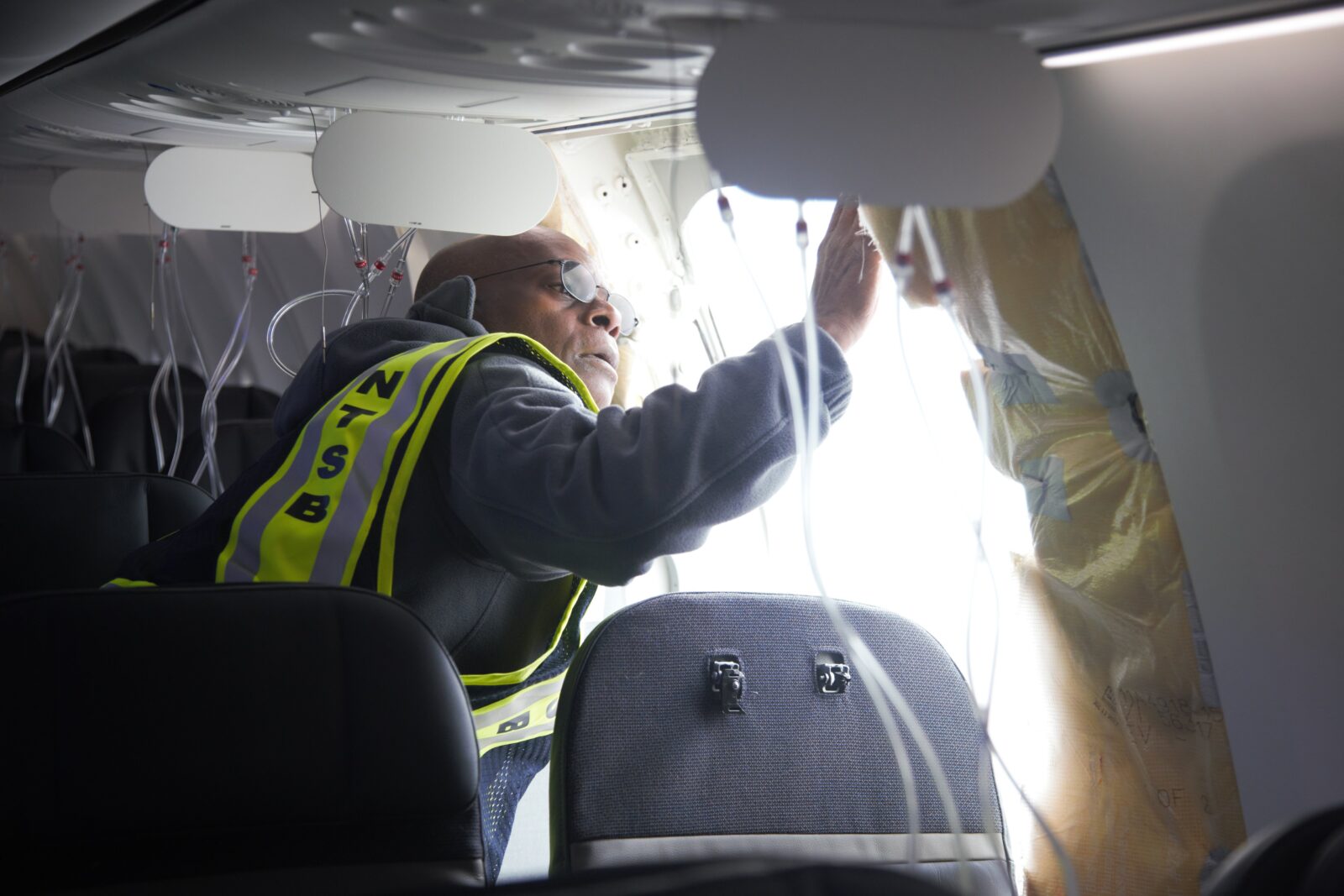
The emergency exit door ‘plug’ which blew out of an Alaska Airlines-operated Boeing 737 MAX 9 airplane on Friday evening has finally been located in the back yard of a Portland-area school teacher called Bob.
The deactivated door was found just an hour after the National Transportation Safety Board (NTSB) wrapped up a press conference in which investigators revealed a slew of new details about what happened on Alaska Flight 1282.
Some of the latest information revealed by investigators includes:
- Potentially vital information from the cockpit voice recorder has been lost after it was automatically written over just two hours after the accident.
- The flight deck door was ripped open by the force of the depressurization, slamming into the forward lavatory door.
- There were three lap infants onboard the aircraft – the FAA does not require lap infants to have any securing device and relies on parents and guardians to hold onto them.
- Flight attendants rushed to ensure that three unaccompanied children were buckled in and had their oxygen masks secured after the ‘explosive’ depressurization.
- The force of the depressurization ripped the First Officer’s headset off her head, and the ‘Quick Reference Handbook’ used by pilots to troubleshoot emergency scenarios was sucked out of the flight deck.
- There was damage throughout the cabin – two tray tables were sucked out the hole, along with two mobile phones belonging to passengers.
The Federal Aviation Administration (FAA) currently only requires cockpit voice recorders to continuously record for two hours before being automatically overwritten. To stop the recording, a circuit breaker has to be pulled in the flight deck, but this wasn’t done, and the data was already lost by the time NTSB investigators finally reached Portland on Saturday afternoon.
The NTSB said during Sunday night’s press conference that it was now calling for the FAA to mandate that cockpit voice recorders continuously record for 25 hours before being overwritten – a requirement already in place in many countries, including across Europe.
Boeing 737 MAX 9 airplanes that are fitted with the exit door plug remain grounded across the United States because of continuing confusion over what inspections are required by operators to ensure the plane is safe to fly.
Alaska Airlines says it is still waiting for inspection criteria from the FAA and Boeing and that significant flight cancellations will continue through mid-week at the earliest. On Sunday, the airline was forced to cancel 170 flights as a result of the grounding, and 60 flights have already been cancelled for Monday. Further cancellations are expected.
Boeing designed an additional emergency exit into the 737 MAX 9 design for high-capacity configurations of the aircraft. When not required, the hole where the exit would be located is permanently ‘plugged’.
It’s hoped that the located plug will give investigators much more information about how the accident occurred and what is required to ensure that other aircraft with the same deactivated door are safe to fly.
Related
United Airlines Confirms It Has Found Loose Bolts On Five Boeing 737 MAX 9 Door PlugsIn "Airline News"
Traumatised Passengers From Alaska Airlines Flight 1282 Offered Free Inflight Snacks If They Step Foot Onboard a Plane AgainIn "Airline News"
Alaska Airlines Grounding its Fleet of Boeing 737 MAX 9 Aircraft After Rapid Depressurization AccidentIn "Airline News"
Mateusz Maszczynski honed his skills as an international flight attendant at the most prominent airline in the Middle East and has been flying ever since... most recently for a well known European airline. Matt is passionate about the aviation industry and has become an expert in passenger experience and human-centric stories. Always keeping an ear close to the ground, Matt's industry insights, analysis and news coverage is frequently relied upon by some of the biggest names in journalism.







